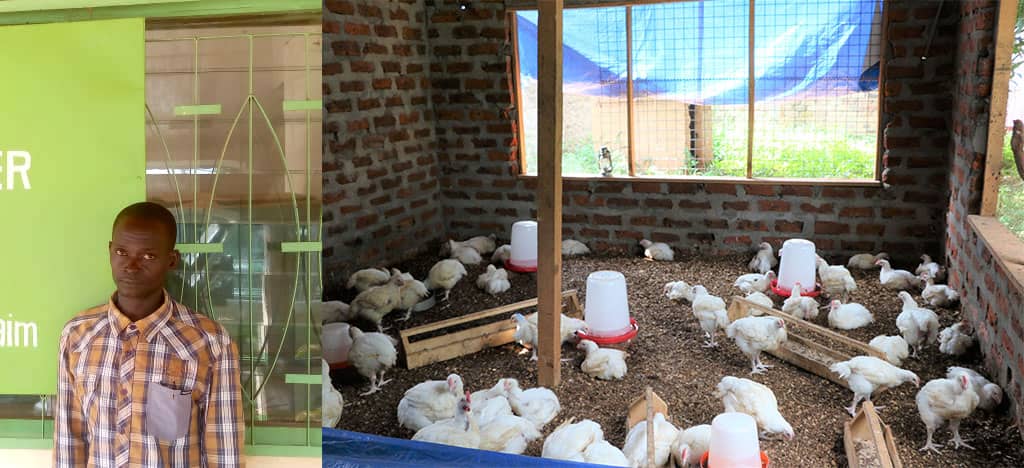Beyond 2030: Youth, Food Systems, and a Future of Food Sovereignty
By Wendy Geza and Mendy Ndlovu
Centre for Transformative Agricultural and Food Systems, School of Agricultural, Earth, and Environmental Sciences, University of KwaZulu-Natal, South Africa
October 2023
Note: The views expressed in this essay are those of the authors. They do not necessarily reflect the views of Welthungerhilfe (WHH) or Concern Worldwide.
Key Messages
-
Young people are emerging into adulthood in a context of unequal and unsustainable food systems that fail to deliver food and nutrition security and are highly vulnerable to climate change and environmental degradation. Youth not only suffer from the failures of current food systems but will inherit these troubled food systems and their looming challenges.
-
Food insecurity and undernutrition are highest and most persistent in South Asia and Africa South of the Sahara, which are also home to the largest share of the youth population. At the same time, many young people perceive farming as unappealing and unprofitable.
-
Current food systems suffer from a lack of food sovereignty—that is, the right of peoples to healthy and culturally appropriate food produced through ecologically sound and sustainable methods, and the right to define their own food and agriculture systems. As a result, indigenous and local farming and knowledge systems are under widespread threat.
-
Youth participation in making decisions that will affect their futures is limited. Although policymakers have begun to seek out young people’s voices and perspectives, the share of youth in formal decision-making forums is negligible, and the increased focus on youth participation in some policy dialogues has not necessarily translated into meaningful impact.
-
The pursuit of food sovereignty presents an opportunity to engage youth in transforming failing food systems to become more sustainable, more just, and better able to supply the needs of all the world’s people, especially the most vulnerable. Young people can bring their energy and innovation to help reclaim contextualized food sovereignty, improving nutrition while strengthening the resilience of local food systems under ecological and climate stress. A transformation to sustainable, resilient, and equitable food systems can provide youth with employment opportunities that are fair, interesting, and sustainable.
-
Leaders must take a long-term perspective and invest in sectors that can improve young people’s well-being, including health, education, and skills development, while also engaging youth in policymaking to promote inclusivity, equity, and sustainability. Young people must seize opportunities to participate in food systems governance and integrate their perspectives into policy to enable just, sustainable food systems for all.
Figure 2.1
WHERE YOUNG PEOPLE LIVE: MEDIAN AGE BY COUNTRY, 2021
 Source: Ritchie and Roser (2022), based on data from UN DESA, Population Division (2022).
Source: Ritchie and Roser (2022), based on data from UN DESA, Population Division (2022).
Global food systems are outdated, unsustainable, vulnerable, and often lack inclusivity and equity (Nguyen 2018; Mabhaudhi et al. 2019; Sampson et al. 2021; Bjornlund et al. 2022). They fail to provide all people, particularly the marginalized in low- and middle-income countries, with adequate and nutritious food in recognition of basic human rights and within safe and sustainable planetary boundaries. Current discussions center largely on addressing global challenges and promoting sustainable development through 2030—just seven years from now—when the Sustainable Development Goals (SDGs) reach their target date. For global youth, this perspective is too shortsighted. Young people are looking much further ahead in a century increasingly shaped by dysfunctional food systems.
The global youth population, currently estimated at 1.2 billion, is the largest in history (see Box 2.1), with the great majority of these young people living in low- and middle-income countries in South Asia, East Asia, and Africa (Figure 2.1; Glover and Sumberg 2020). These youth are among those who have suffered the most from the impacts of the COVID-19 pandemic on their well-being and livelihoods (HLPE 2021). At the same time, they are emerging into adulthood in a context of inherently unequal and unsustainable food systems that fail to deliver food and nutrition security and are highly vulnerable to climate change and environmental degradation. We, as young people in our 20s, are keenly aware that our generation not only suffers from the failures of current food systems but will inherit these troubled food systems and their looming challenges. Those challenges threaten the realization of our right to food as well as other human rights, such as health, education, decent work, and livelihoods.
Young people are entitled to expect a long and healthy future. As heirs to current food systems, we deserve a stronger voice in transforming those food systems to meet our current and future needs, primarily through a focus on food sovereignty, which will give all people greater power to shape their food systems in line with their cultural, socioeconomic, developmental, and environmental values.
Current Food Systems Are Largely Failing Youth
Young people are entitled to expect a long and healthy future. As heirs to current food systems, we deserve a stronger voice in transforming those food systems to meet our current and future needs, primarily through a focus on food sovereignty, which will give all people greater power to shape their food systems in line with their cultural, socioeconomic, developmental, and environmental values.
The world’s youth are in line to inherit food systems that are failing on multiple fronts. At the most basic level, current food systems are not providing all people with sufficient nutritious food. Approximately 735 million people were affected by hunger in 2022, and more than 3.1 billion could not afford nutritionally rich diets in 2022 (FAO et al. 2023a). While global hunger figures do not report specifically on hunger among youth, we know food insecurity and undernutrition are highest and most persistent in South Asia and Africa South of the Sahara, which are also home to the largest share of the youth population (Glover and Sumberg 2020; FAO et al. 2023a).
Gender also plays a role in youth’s experiences of hunger and undernutrition. Women and girls make up about 60 percent of severely hungry people (WFP 2023c). In many low- and middle-income countries, women, particularly in lower-income groups, are responsible for producing and preparing food and obtaining water and firewood.
During periods of food scarcity, women and girls often eat last and least, making them more vulnerable to food and nutrition insecurity (Botreau and Cohen 2020).
In many countries, young people, especially young women, are finding it increasingly difficult to obtain decent employment (ILO 2020). In 2020 the global youth unemployment rate was estimated at 18.4 percent—more than three times the adult rate (Figure 2.2). Globally, more than one in five young people are not in education, employment, or training (ILO 2022). The COVID-19 pandemic led to millions of job losses, significantly affecting young people, who are particularly vulnerable to job losses and crises (HLPE 2021). In addition, young workers are twice as likely as adult workers to live in extreme poverty—on less than US$1.90 a day—and are far more likely to be informally employed (ILO 2022). The burden of unpaid care work keeps young women out of the workforce by leaving them with limited time, energy, and opportunities to pursue income-generating activities. Unpaid care also perpetuates gender inequality and is a root cause of poverty and hunger (Action Against Hunger 2021).
For youth in low- and middle-income countries, employment in the agrifood system is more accessible than in other sectors because of low entry requirements in terms of capital and skills (Christiaensen et al. 2021). Furthermore, projections suggest that increased demand for food and rising food prices present opportunities for jobs and business enterprises in agrifood systems in Africa South of the Sahara (Chipfupa and Tagwi 2021). For many young people, however, farming is considered “an occupation of last resort and low productivity” (Filmer and Fox 2014). They have little interest in agricultural activities because of a lack of support, innovation, and education and a perception that agriculture does not offer opportunities for prosperity or self-realization (Chipfupa and Tagwi 2021; Girdziute et al. 2022).
Many youth who work in food systems have informal jobs with minimal job security, low income, and gender inequality (Dolislager et al. 2020; Fox and Gandhi 2021). In some countries in Africa South of the Sahara, the number of hours youth spend working in agriculture has declined over time, and many youth opt out of agriculture entirely (Chipfupa and Tagwi 2021).
The challenges within food systems will increase in the future, particularly given the increasing impacts of climate change, to which low- and middle-income countries and their youth populations are disproportionately vulnerable. Without immediate action, more people in vulnerable low- and middle-income countries, which lack adaptive capacity, will grapple with worsened food and nutrition security challenges. Although the voices of young people echo globally, expressing the need for urgent climate change action, progress remains stagnant.
The Loss of Food Sovereignty Weakens Food Systems
Young people worldwide are forming their own organizations and initiatives, reshaping perceptions of global challenges while driving social innovation and demonstrating a willingness to be part of the solution.
As youth, we see the lack of food sovereignty as one of the greatest weaknesses of current food systems. We view the pursuit of food sovereignty as an enormous opportunity to engage youth in transforming food systems to become more sustainable, more just, and better able to supply the needs of all the world’s people, especially the most vulnerable.
The concept of food sovereignty draws attention to four critical factors: people and their rights, the quality of food produced, cultural aspects of food systems, and environmental well-being. A global forum held in Nyéléni Village, Mali, in 2007 resulted in a declaration that defined food sovereignty as “the right of peoples to healthy and culturally appropriate food produced through ecologically sound and sustainable methods, and their right to define their own food and agriculture systems” (Declaration of Nyéléni 2007).
The loss of food sovereignty, particularly in the world’s low- and middle-income countries, has been hastened by several major factors, including colonialism, poor governance, the intensive capitalization of food systems, the widespread growth of monocultures in agriculture, and some of the negative outcomes of the Green Revolution (Weiler et al. 2015; Shilomboleni 2017). As a result, indigenous and local farming and knowledge systems are under widespread threat. They have been not only sidelined in research and policy but also neglected as young people’s participation in food systems alongside elders, who are often left behind in rural areas, has decreased (Gunaratne et al. 2021).
In many areas, local farmers are excluded from seed systems and have limited control over what they plant, relegating indigenous crops to the status of neglected crops (Mabhaudhi et al. 2018; Sidibé et al. 2020; Mudau et al. 2022). Many seed-related bills and laws have emerged across Africa, Asia, and South America.
Section 326 of Kenya’s Seeds and Plant Varieties Act of 2012, for example, criminalizes the exchange of seeds for all “unregistered crop varieties”—often traditional crop varieties—restricting farmers’ choices regarding food production and agricultural and food systems (GRAIN and La Via Campesina 2015; Dena 2022). By robbing people of their livelihoods, food and nutrition security, and food sovereignty, these monopolized and restrictive legal frameworks threaten the human rights of all—especially those in marginalized settings and youth, as they stand to suffer the consequences of these actions for years to come.
The consequent lack of food sovereignty has contributed to multiple challenges, including widespread food and nutrition insecurity and adverse health outcomes (Gunaratne et al. 2021; Sampson et al. 2021; Bjornlund et al. 2022). Although food-security-specific interventions, such as the promotion of major, high-yielding food crops, pushed down global hunger between 1990 and 2017, both the share and the number of undernourished people have stagnated or risen since 2017 (FAO et al. 2023a). This reversal underscores the urgent need for a new direction in food systems transformation.
Although little policy action has taken place to reinstate food sovereignty since the 1996 World Food Summit, there is a growing global conversation and an increased focus on social justice and the need to realize and protect people’s right to food (La Via Campesina 2021; Sampson et al. 2021; Bjornlund et al. 2022; GFFA 2023). Greater food sovereignty will likely involve reinstating indigenous and neglected crops4 and mixed crop-and-livestock farming systems to diversify and localize current globalized food systems, making them more accessible, sustainable, and inclusive and increasing their resilience to climate stresses (Mabhaudhi et al. 2018, 2019; Akinola et al. 2020; Wijerathna-Yapa and Pathirana 2022). This will require a more inclusive and integrated seed system framework to support solutions that seek to reduce the vulnerability of food systems (Mabhaudhi et al. 2018; Wijerathna-Yapa and Pathirana 2022).
Locally resilient, diverse, innovative, and less input-intensive smallholder farming systems—if they are supported, promoted, and extended—may constitute a sustainable solution to current food and nutrition challenges and a path out of poverty and hunger for vulnerable populations (Mabhaudhi et al. 2018; Mudau et al. 2022; Wijerathna-Yapa and Pathirana 2022). Such an approach also supports human rights for marginalized groups, which are currently being sidelined by the design of food and seed systems. Innovations are needed to achieve inclusive, sustainable food systems and food sovereignty for all within planetary boundaries. Youth, as the inheritors of injustice, have the potential to drive these innovations.
Youth Have Little Voice in Policy Processes
In practice, food sovereignty involves interaction between stakeholders from national, local, and community-based institutions and knowledge holders, such as local elders. This inclusive interaction could create opportunities for young people to bring their energy and innovation to help reclaim contextualized food sovereignty, thus improving nutrition while strengthening the resilience of local food systems under ecological and climate stress.
There is a long way to go to ensure the meaningful participation of young people in policy processes that can influence food systems and promote food sovereignty. At a formal, governmental level, the share of youth in decision-making forums is negligible. In most regions, the average age of members of parliament is at least 50 (Stockemer and Sundström 2022). The representation of youth aged 30 or under in parliaments is low in all regions (see Table 2.1) and even lower for women under the age of 30, especially in Asia, the Pacific, the Middle East and North Africa, Africa South of the Sahara, and Western Europe. Because youth do not fully participate in legislative decision-making, their specific priorities and needs are often not considered (Stockemer and Sundström 2022).
As they confront global challenges, policymakers have begun to seek out young people’s voices and perspectives by encouraging youth participation in workshops, conferences, and working groups. Additionally, young people worldwide are forming their own organizations and initiatives, reshaping perceptions of global challenges while driving social innovation and demonstrating a willingness to be part of the solution. Examples include Act4Food Act4Change, the Asian Indigenous Youth Platform, the Global Youth Innovation Network (GYIN), Innovative Food Systems Solutions (IFSS), Nutrition Connect, the Slow Food Youth Network, the Youth Working Group of the International Planning Committee for Food Sovereignty, and Young Leaders for Nutrition. These youth-led organizations currently advocate for food systems transformation by raising awareness about food issues, food sovereignty, sustainable food production, nutrition, and environmental protection, including pledges to encourage policy action.
This increased focus on youth participation in policy dialogues has not necessarily translated into meaningful impact. Youth participation in decision-making appears superficial and limited (see Box 2.3). Despite, for instance, young people’s advocacy for climate change action and food systems transformation, progress is still too slow. The opinions and ideas expressed by youth have only minimal tangible outcomes, and their perspectives are not integrated into the design or implementation of policy interventions (Yunita et al. 2018; Macauley et al. 2022; Orsini and Kang 2023).
BOX 2.3
“THERE IS NO POINT IN OUR BEING INVOLVED IN SPACES THAT HAVE NO ACTION PLAN THAT INCLUDES YOUTH”
Sophie Healy-Thow (age 23) of Ireland is a co-founder of Act4Food Act4Change. She is also a global youth campaigns coordinator for the Global Alliance for Improved Nutrition (GAIN), a Lead Group member of the Scaling Up Nutrition (SUN) Movement, and a board member of ActionAid UK. She has served as co-chair of the United Nations Food Systems Summit Youth Liaison group. In a May 2023 interview, she gave her perspective on the vital importance of engaging young people:
Investing in young people is essential; youth engagement and inclusion should be more meaningful and sustainable. It should not be seen as a fad. Youth engagement opportunities are often just a box-ticking exercise, and nothing tangible happens post-engagement gatherings, such as conferences, seminars, and workshops. We need to change this narrative.
Young people should be not only spoken to but spoken with. Young people should be board directors in the NGO space and the business world because we bring a different perspective, and expectations do not bind us. Youth should also be involved as policy co-creators to encourage the development of responsive and sustainable policies. Making decisions about our future without including us in decision-making makes absolutely no sense.
Governments should invest in youth development in all aspects, such as in-school nutrition programs to ensure food and nutrition security from early childhood to the university level. This will improve education outcomes and opportunities for young people to contribute to society.
Empowering Youth by Driving toward Food Sovereignty
Leaders at all levels have a moral and economic imperative to tap into young people’s energy, creativity, and dynamism to transform food systems. Engaging young people in conversations on and governance of food systems transformation is a strategic way to adapt and adopt innovations for improved nutrition and food security outcomes, especially in the context of a move toward food sovereignty (Figure 2.3 on page 32). The right to food is increasingly recognized, and a shift toward food sovereignty will allow people to realize that right in a socially, culturally, and ecologically conscious way (Blue Bird Jernigan et al. 2021; Sampson et al. 2021). Youth can help advance the progressive realization of the right to food in several ways. They can innovate to transform food systems to align with their local context and deliver improved nutrition and food security. They can help reinstate diverse indigenous and traditional cropping systems currently under threat, and cultivate indigenous and neglected crops to create more resilient, context-specific food systems.
Leaders must pursue, and youth must demand, investments in sectors that can improve young people’s well-being, including health, education, skills development, and social connectivity. High-quality education and training not only enable youth to become more productive and employable but serve as foundations for personal development and well-being, help fight poverty and unemployment, promote equality, and positively influence individuals’ lives while benefiting society (Idris et al. 2012). Rigorous evaluations of agricultural skills training programs for youth are needed to provide evidence on employment outcomes, which could encourage governments and donors to scale up such programs (Maïga et al. 2020).
A transformation to sustainable, resilient, and equitable food systems can provide fair, interesting, and sustainable employment opportunities for the current population of young people and future generations (Nguyen 2018; Mabhaudhi et al. 2019). Such food systems can enable freedom of choice and innovation in agrifood systems, encouraging creativity and allowing young people to tap into niche production opportunities. Realizing this vision requires boosting young people’s access to green jobs, land, youth-sensitive credit and financial services, productive resources and equipment, and markets.
Aspirational career paths should provide opportunities and remove barriers for youth seeking to work in agricultural value chains. For young people not inclined to work on farms, including those without access to land or productive resources, governments and the private sector could help position them in nonfarm activities that drive agricultural transformation, such as improving rural markets and promoting environmental sustainability (Geza et al. 2021). Improving rural markets would entail investing in infrastructure for transportation, water, electricity, and postharvest handling and storage, as well as making investments downstream in the value chain. These efforts could be facilitated by including youth in the implementation of existing global policies to address food system challenges—such as the SDGs and the Paris Agreement on climate change—through further collaboration with international youth organizations and forums already involved in this work.
To develop youth-inclusive and youth-specific policies, policymakers need timely, reliable data on current youth roles in food systems activities and policy processes (HLPE 2021). In addition, the conditions, capacities, and opportunities faced by youth vary widely based on their context, so empowering youth as agents of change in transforming food systems should recognize the diversity, intersectionality, and context specificity of youth needs, challenges, and aspirations.
Conclusion
As youth, we see that current food systems are unsustainable, inequitable, non-inclusive, and vulnerable to external shocks and risks. Our generation, which will inherit these food systems and live with them for decades to come, has a huge stake in ensuring that the food systems of the 21st century are inclusive, equitable, sustainable, resilient, and localized. A shift toward sustainable food systems is necessary for planetary health and human well-being. Such systems will promote broader economic, social, and environmental sustainability and contribute to reduced greenhouse gas emissions and more effective adaptation to and mitigation of climate change.
Most young people involved directly or indirectly in food systems livelihoods are located in rural areas. Therefore, addressing youth participation in food systems requires a holistic approach broadly focused on improving rural economies, social well-being, and service delivery. Efforts must be made to create a supportive environment for youth to pursue careers and interests in food systems. Increasing agricultural productivity and promoting and investing in innovations such as mechanization, farm advisories, and irrigation to make farming more profitable and less laborious could attract youth into agriculture by unlocking diverse employment opportunities.
To build such food systems and engage youth for generations to come, leaders at all levels should ensure that the direction and targets of policy go further than 2030 to look toward 2050 and beyond.
As they embark on this long-term pathway, they must do more than simply pursue dialogue with young people. They must engage youth in policymaking to promote inclusivity, equity, and sustainability. At the same time, young people must seize opportunities to participate in food systems governance, advocate for social justice, promote gender equity, protect every human’s right to food and food sovereignty, spur climate change action, and integrate their perspectives into policy to enable just, sustainable food systems for all.
Footnotes
- The concept of food sovereignty was introduced at the 1996 World Food Summit by La Vía Campesina, an international farmers’ movement. The movement articulated seven principles of food sovereignty: food as a basic human right, the need for agrarian reform, protection of natural resources, reorganization of food trade to support local food production, reduced multinational concentration of power, social peace, and greater democratic control of the food system (Sampson et al. 2021).
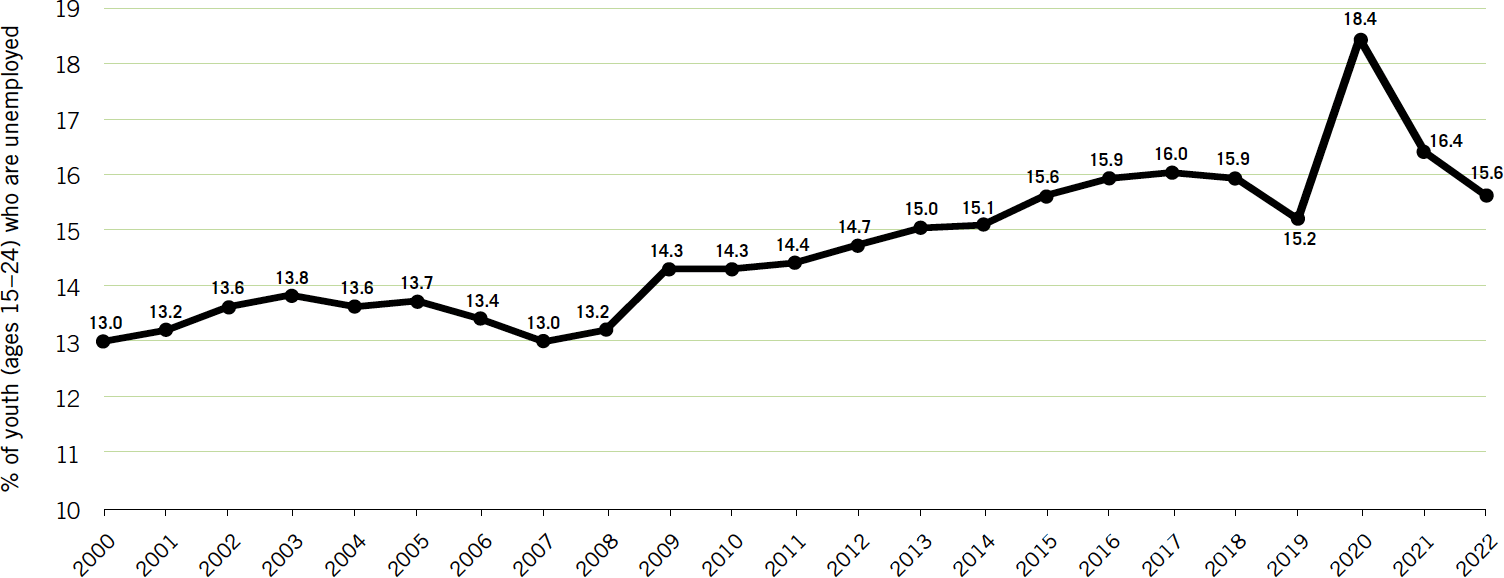 Source: World Bank (2023c).
Source: World Bank (2023c).
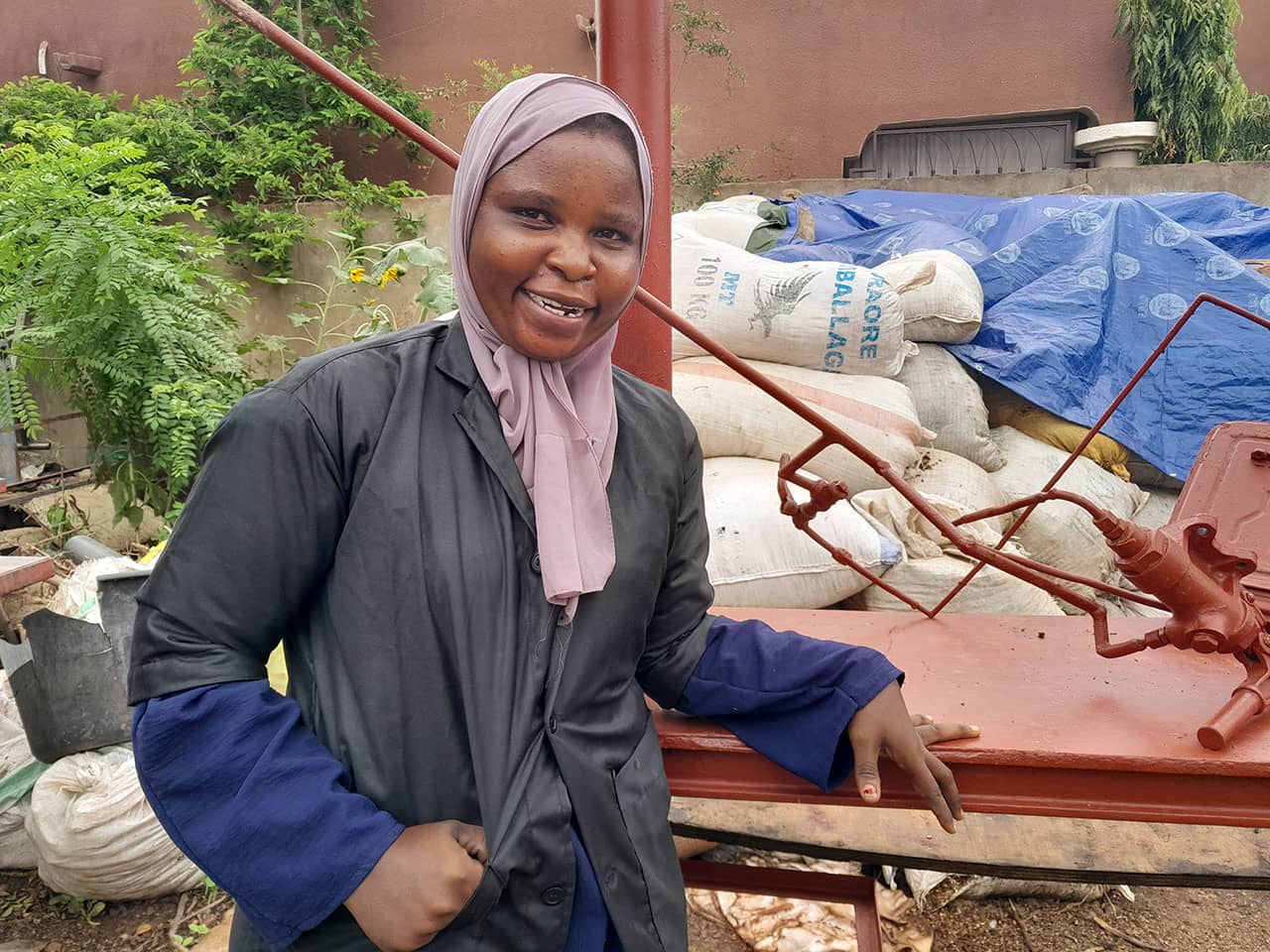
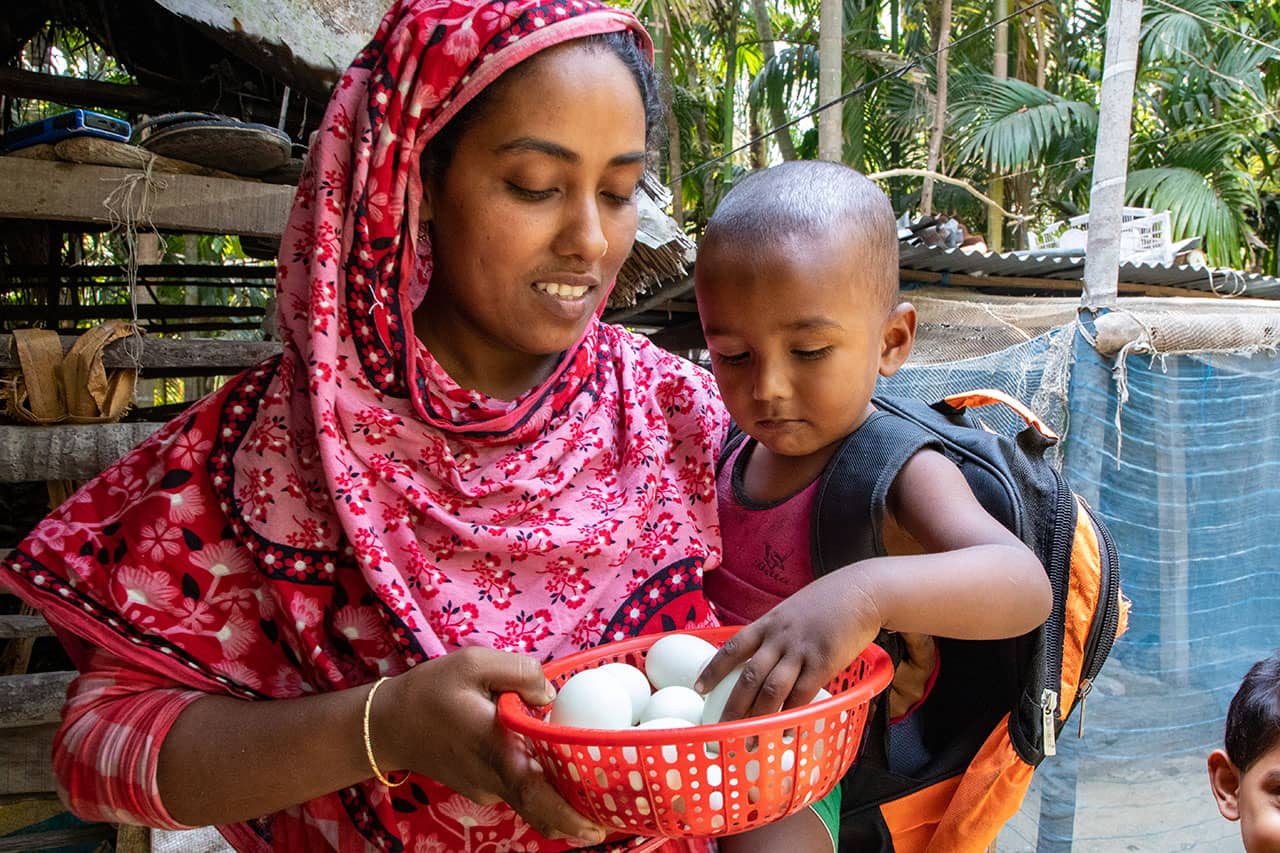

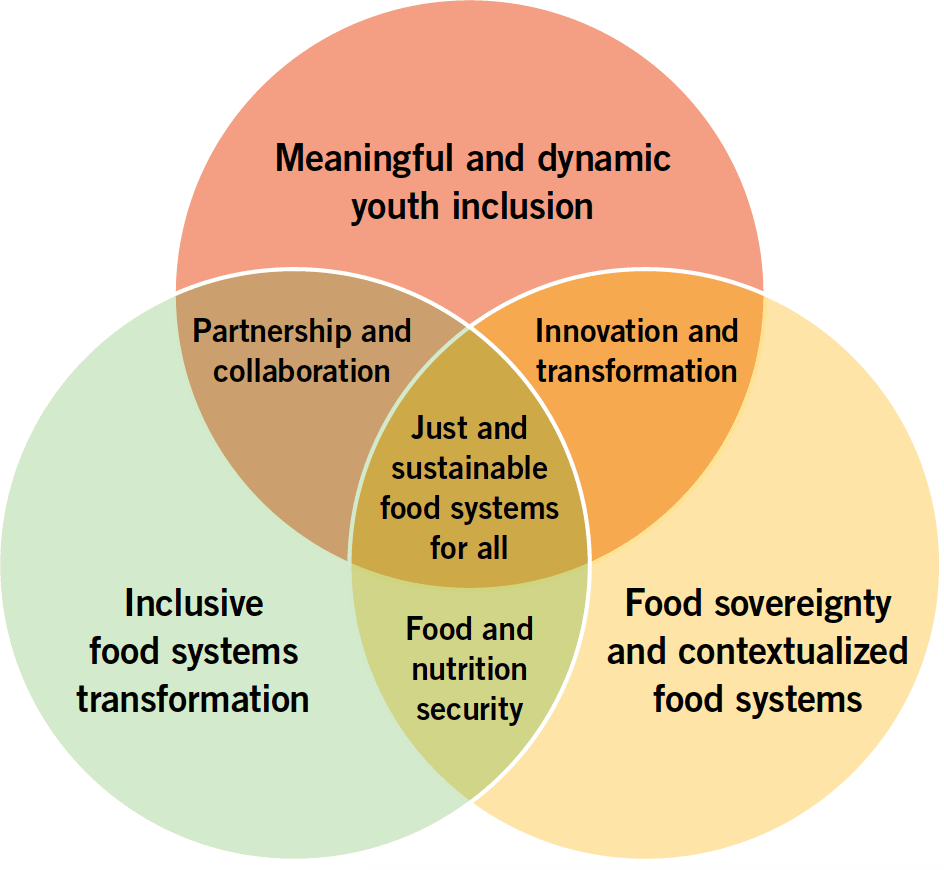 Source: Authors.
Source: Authors.
